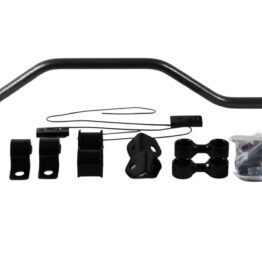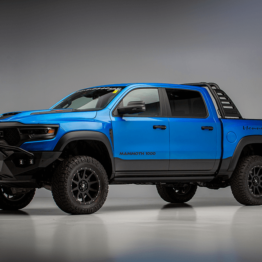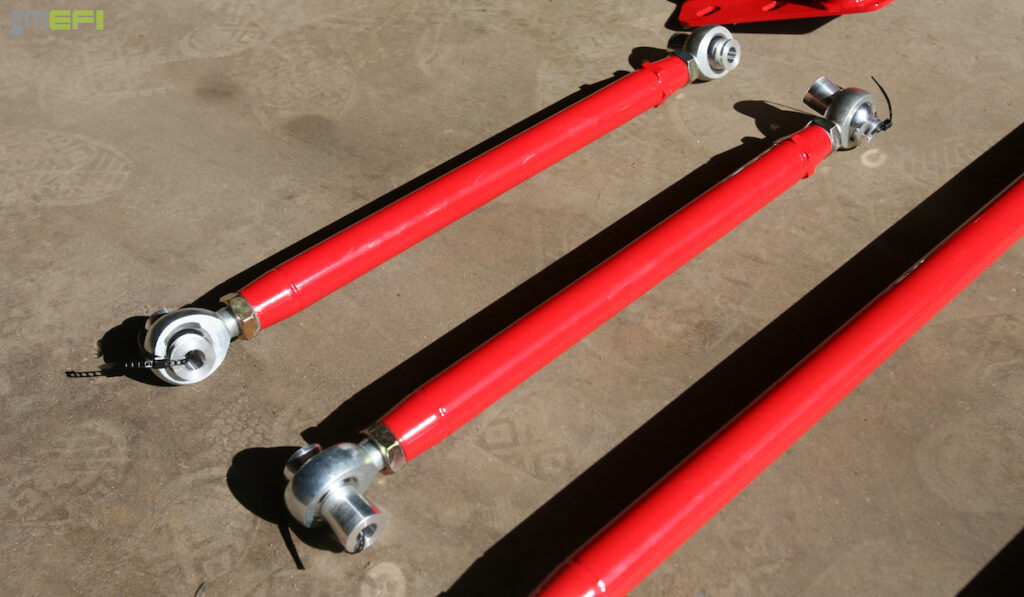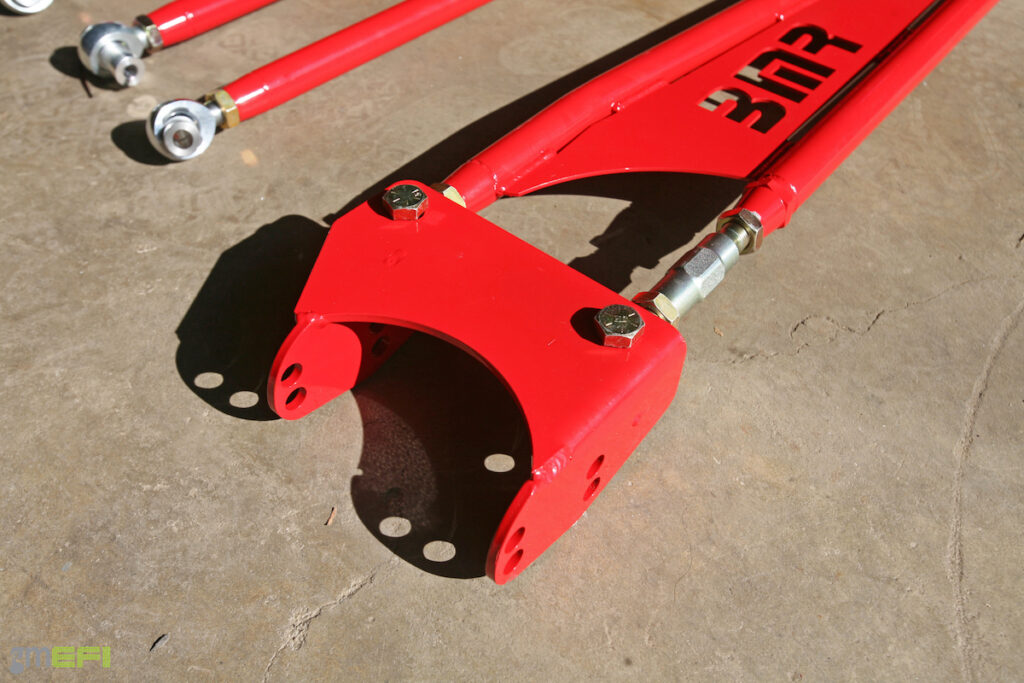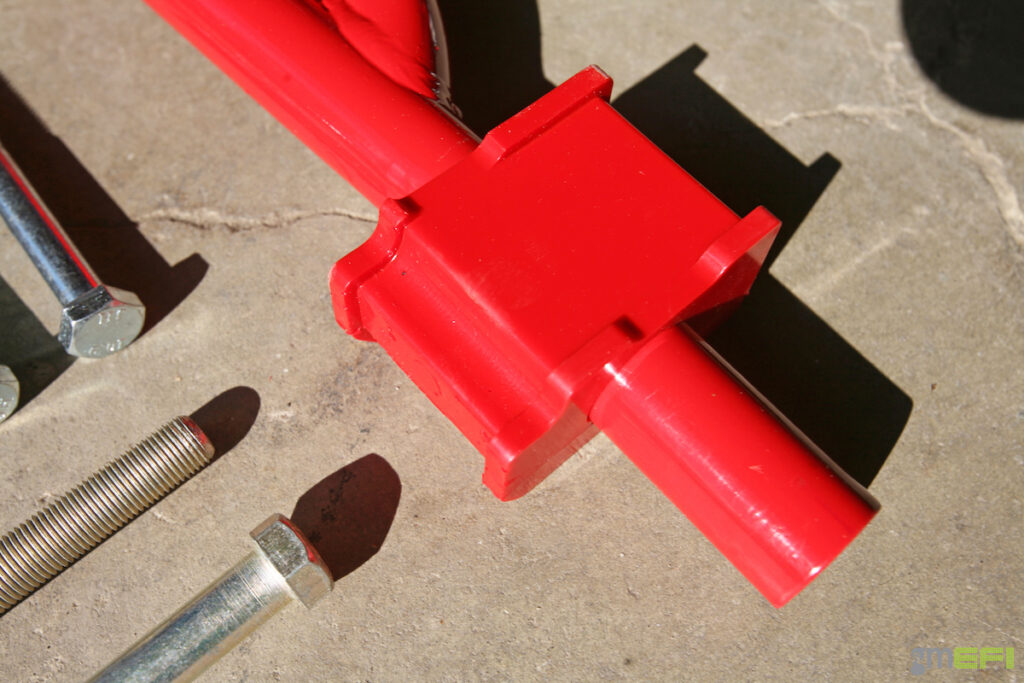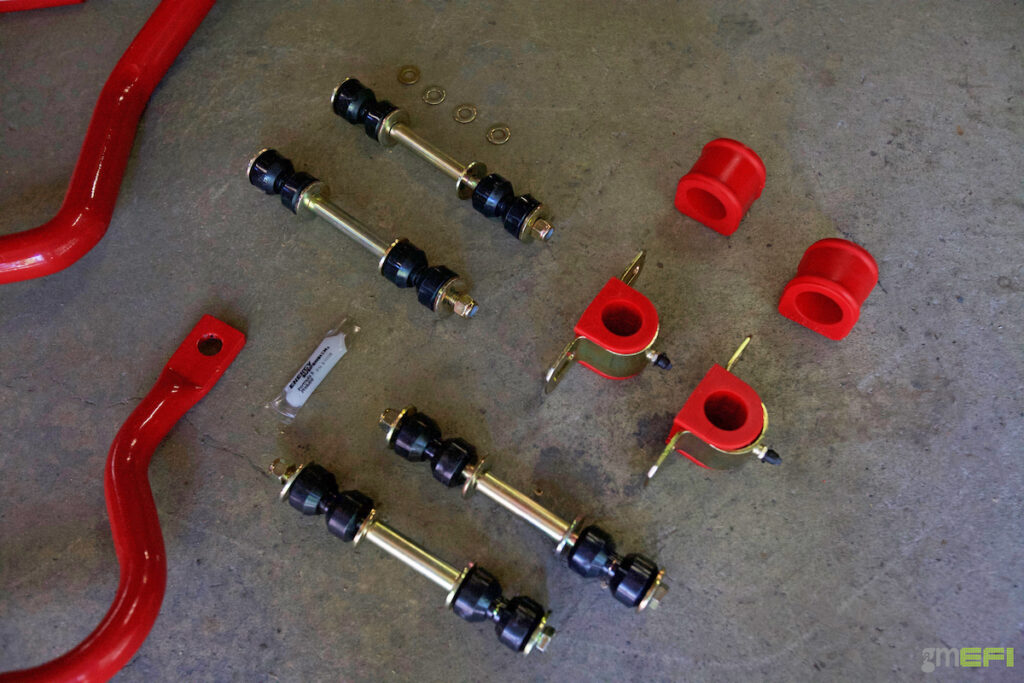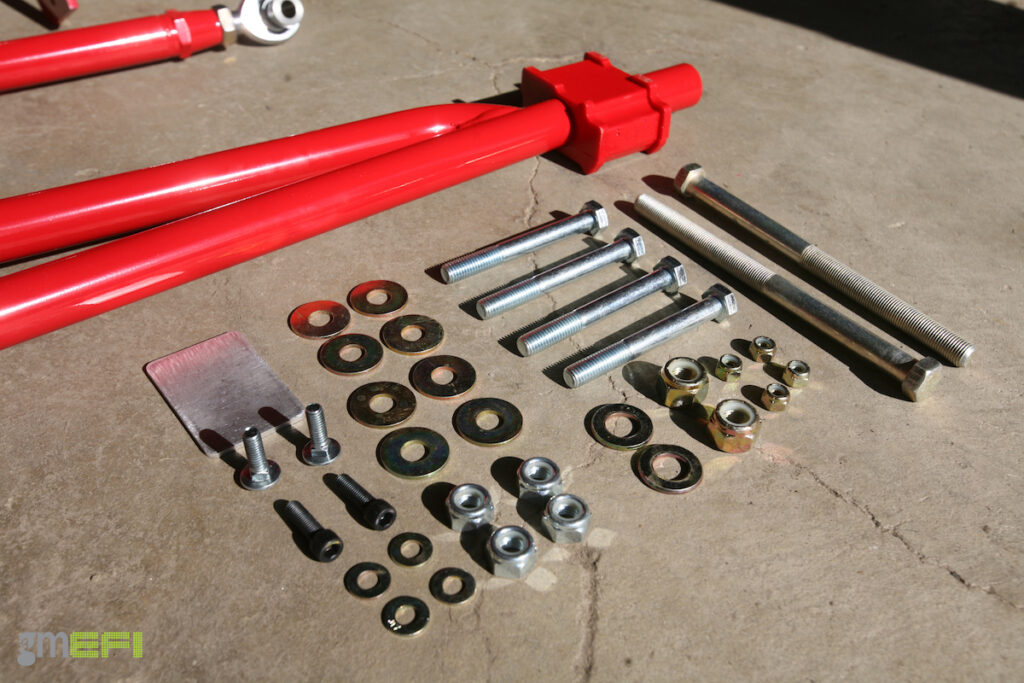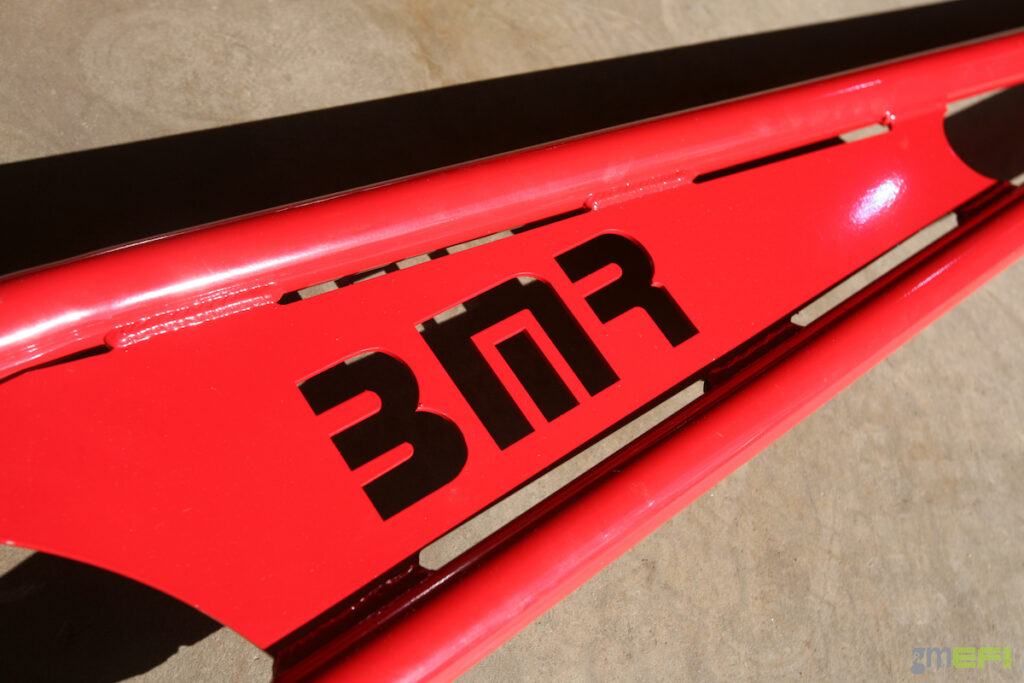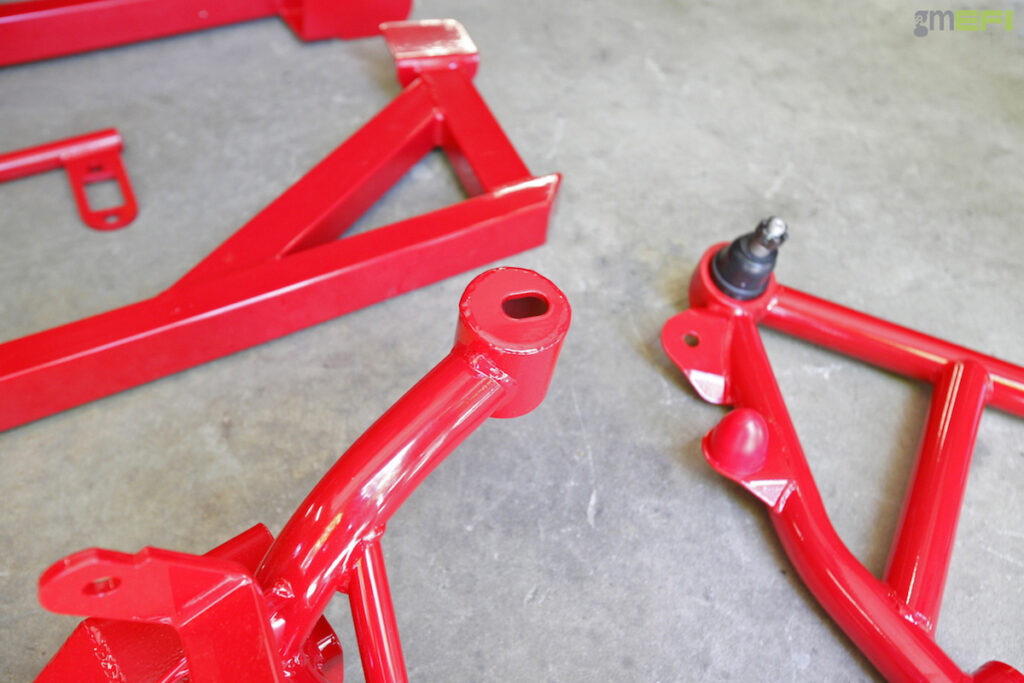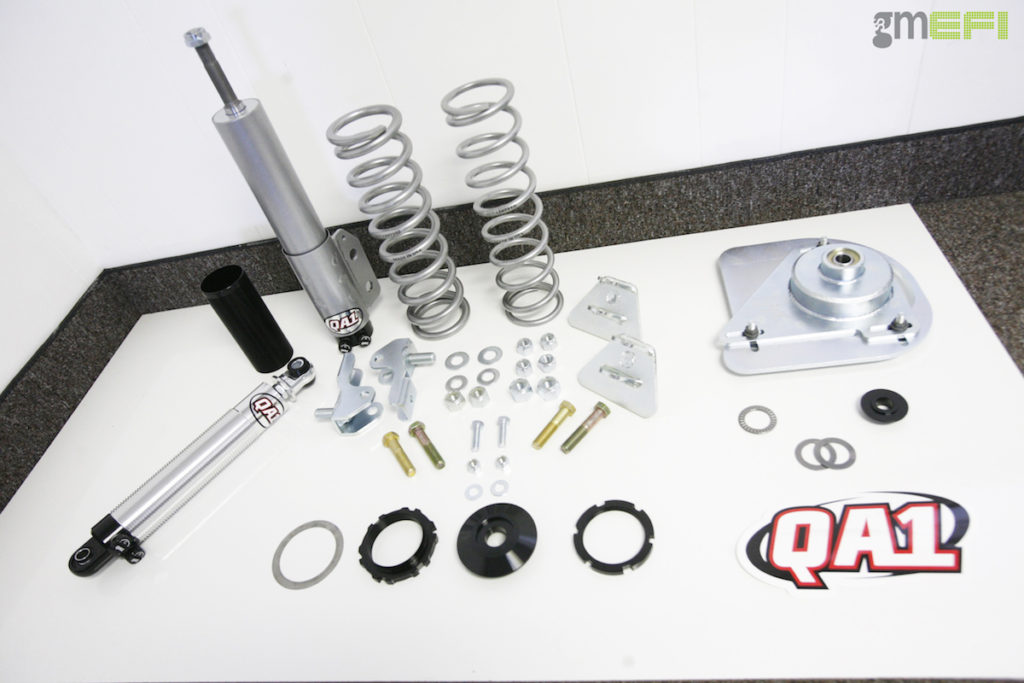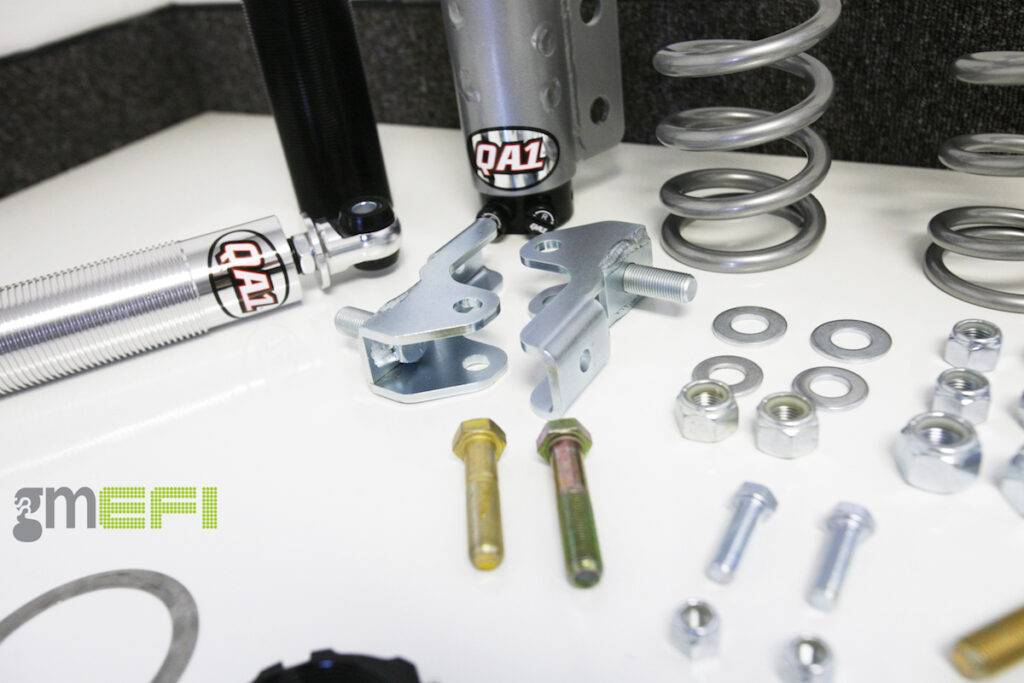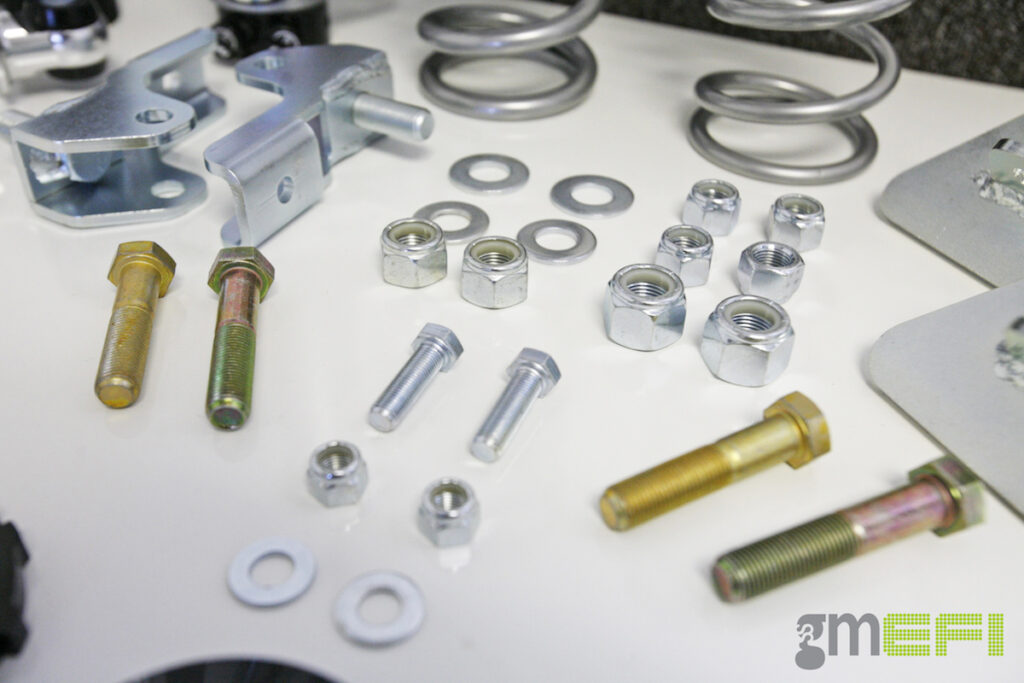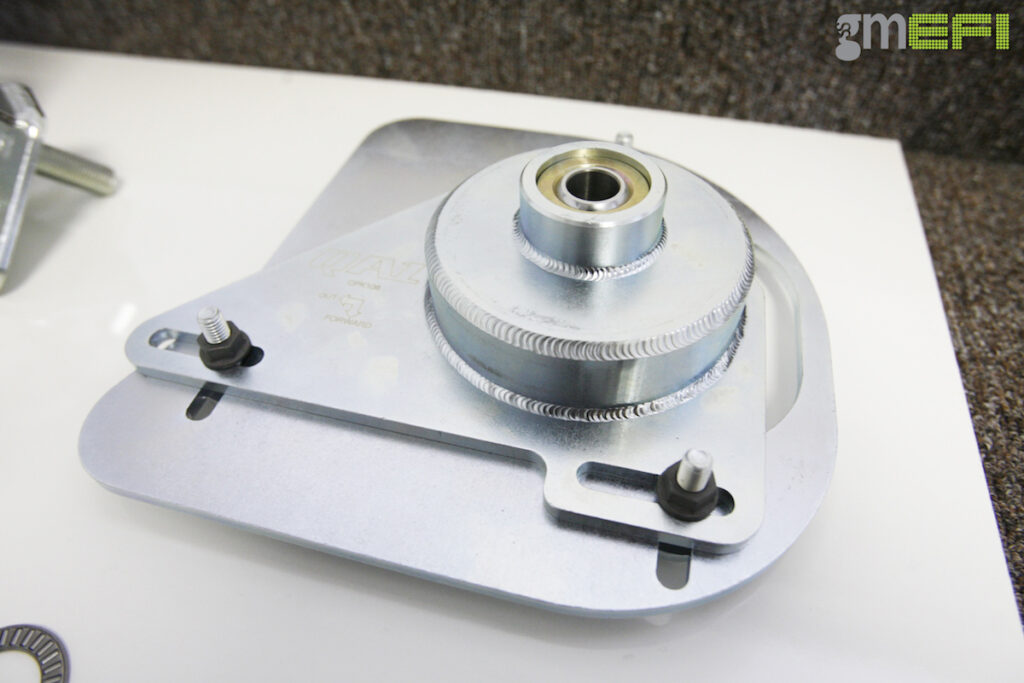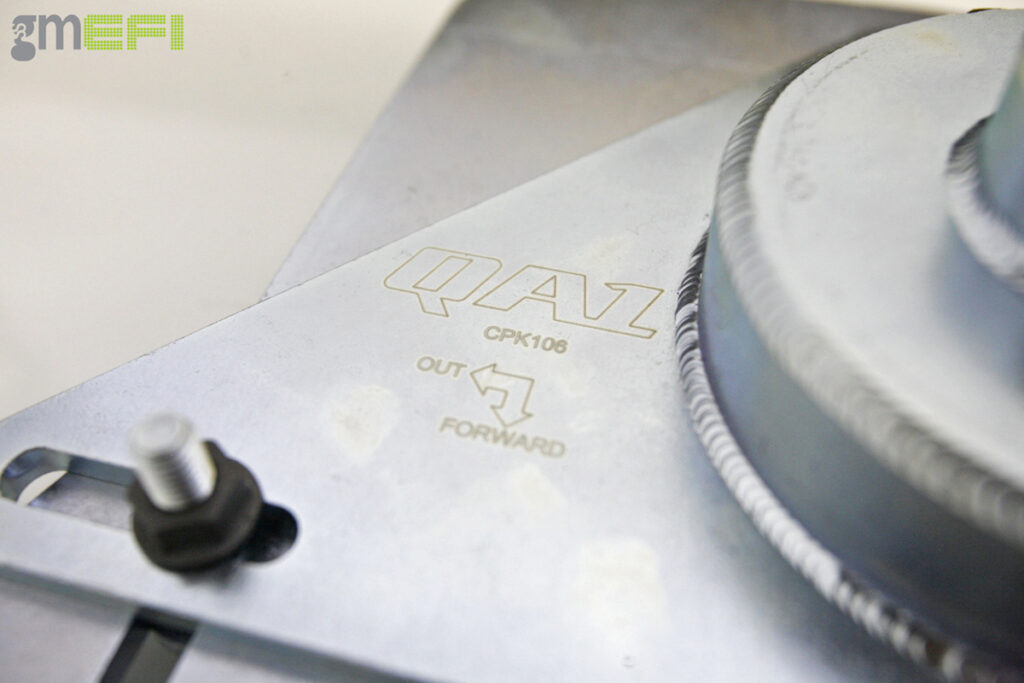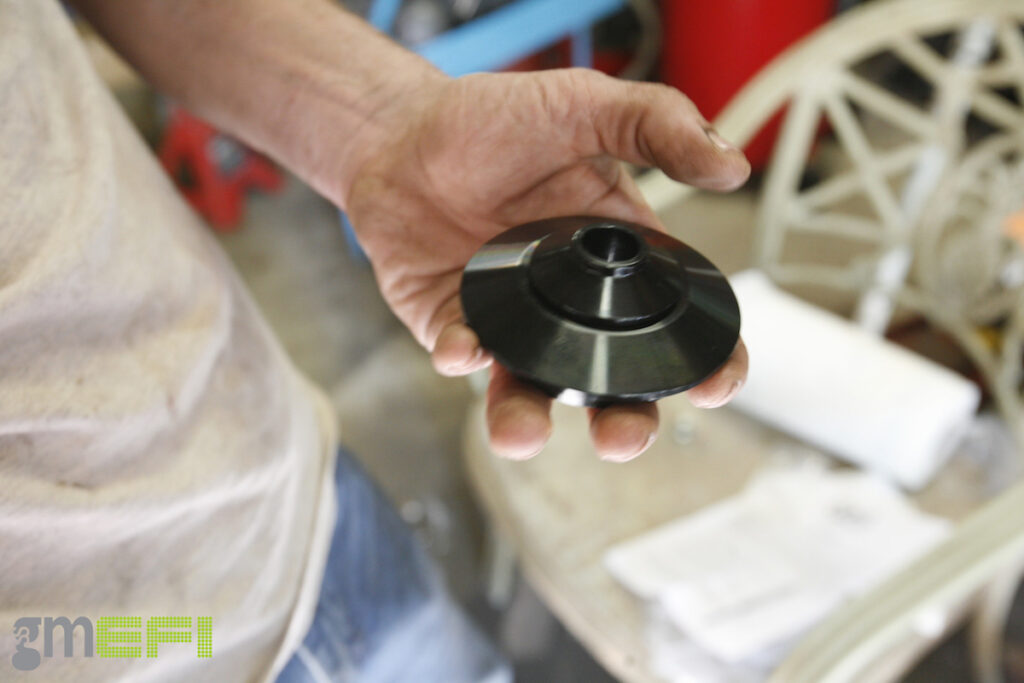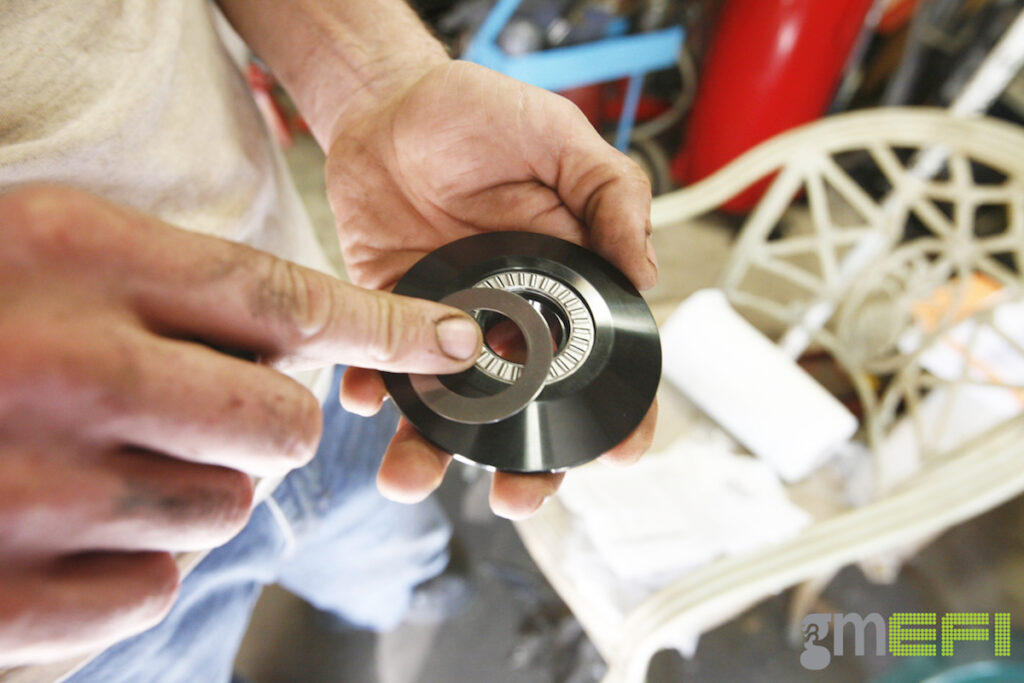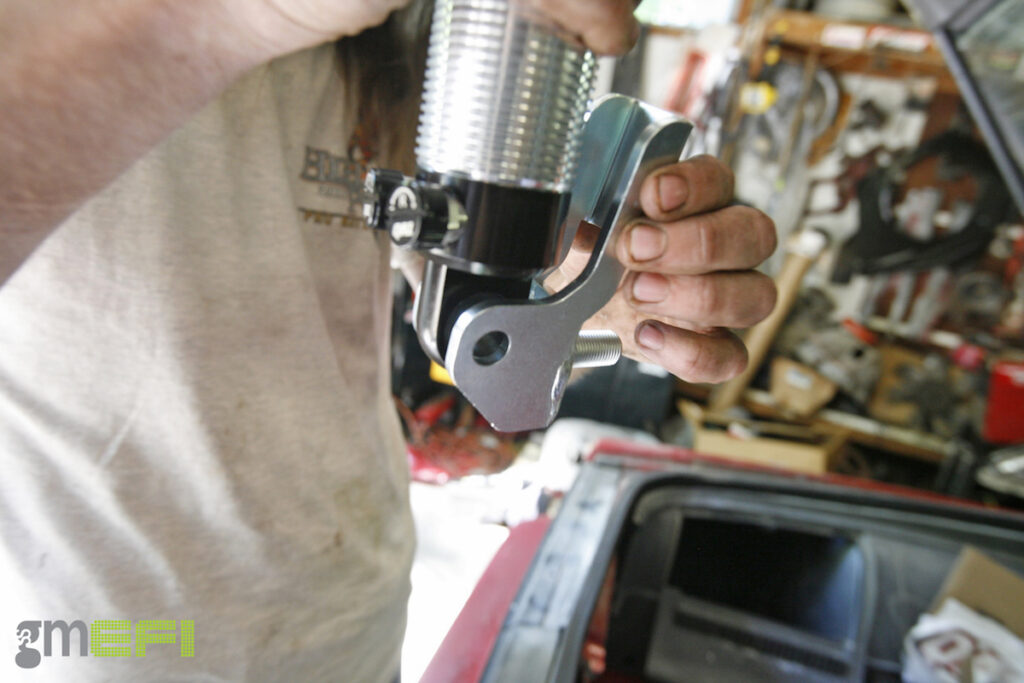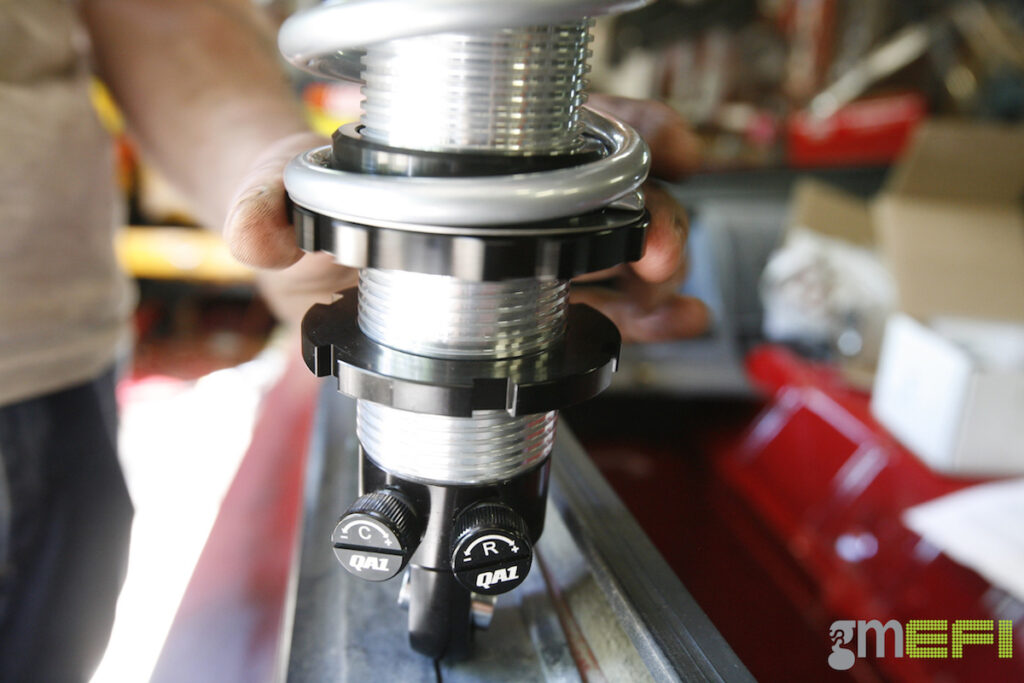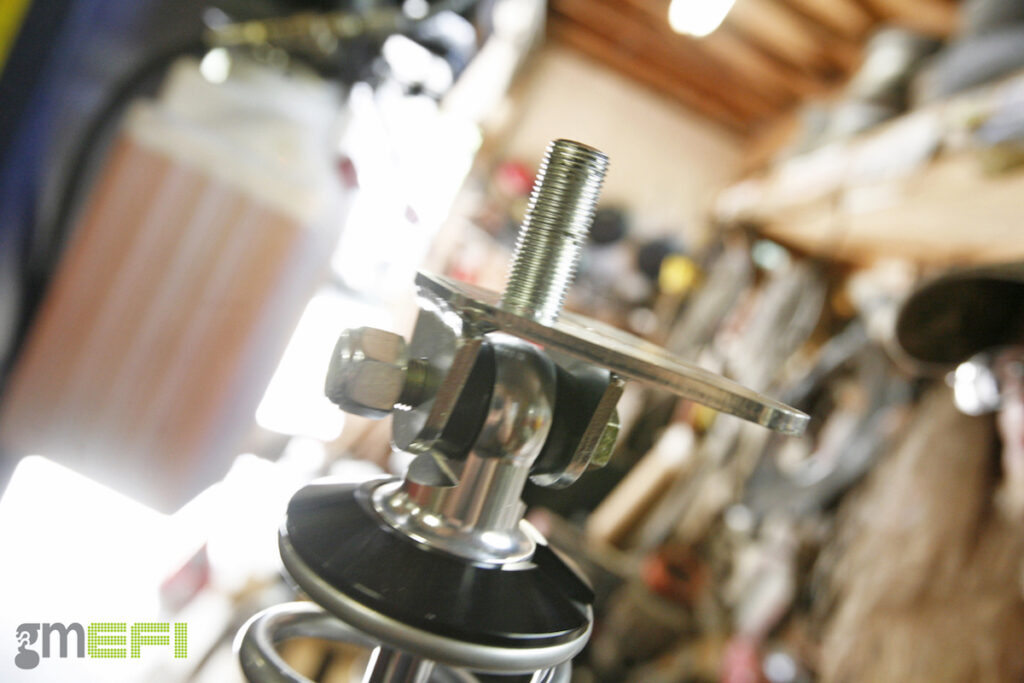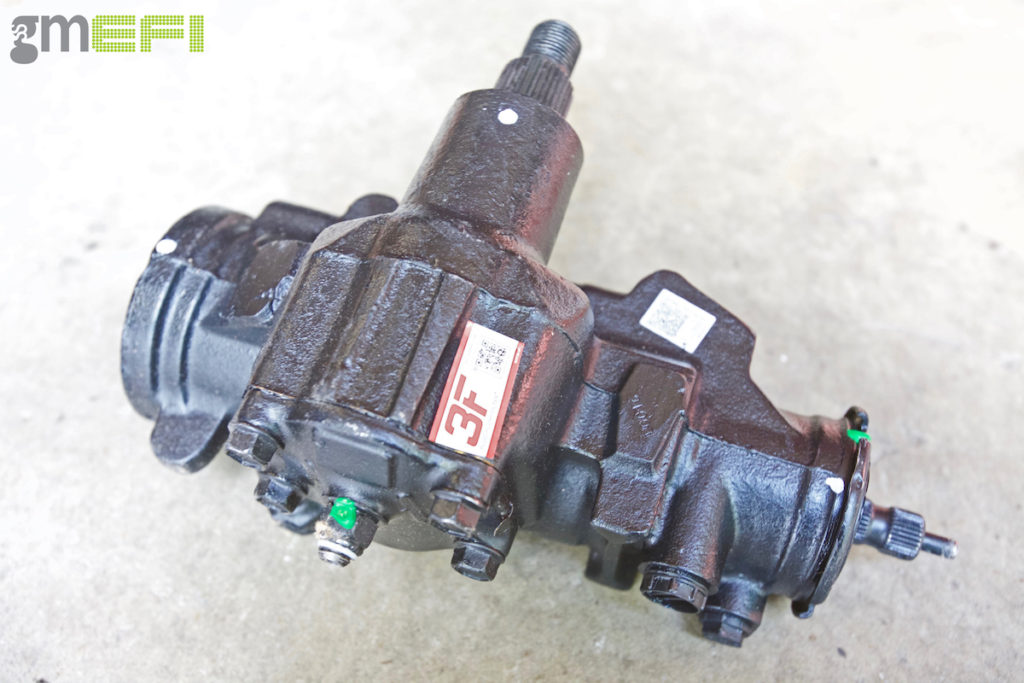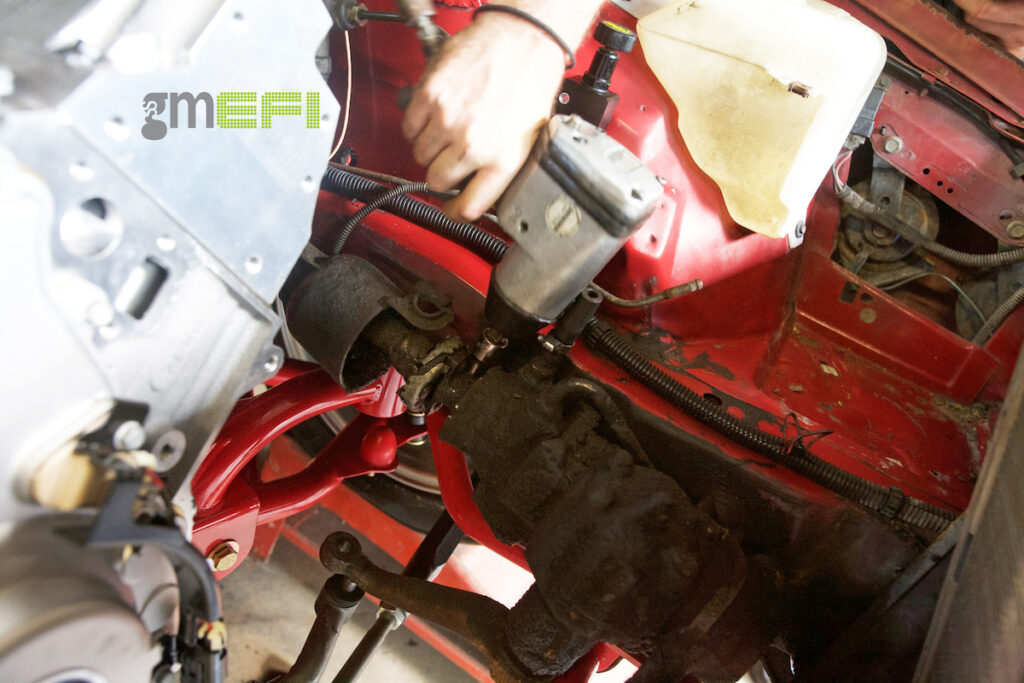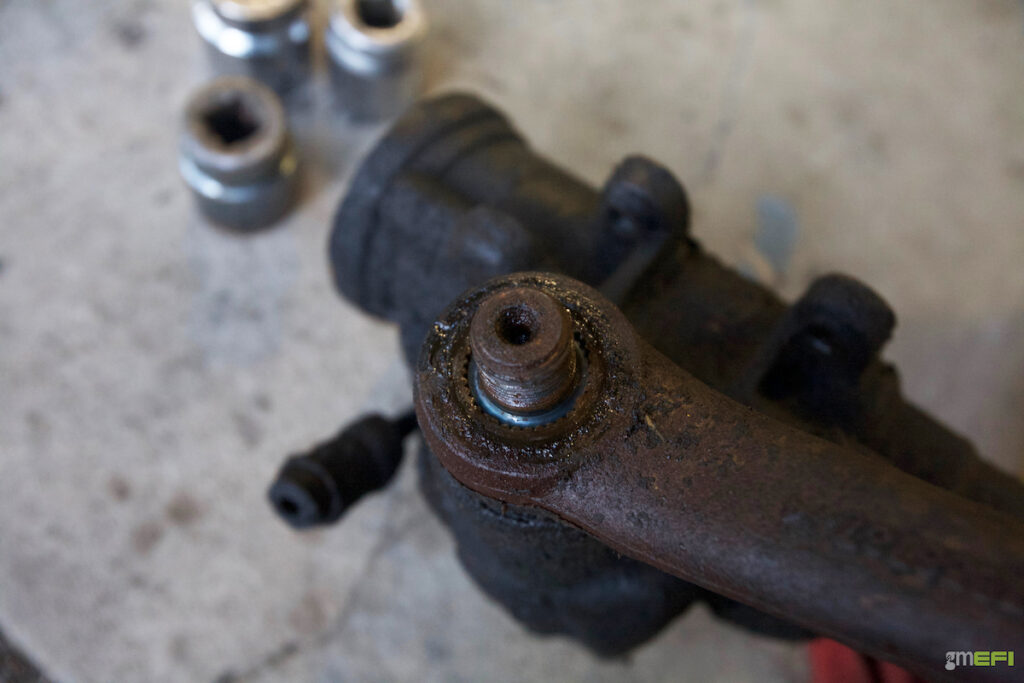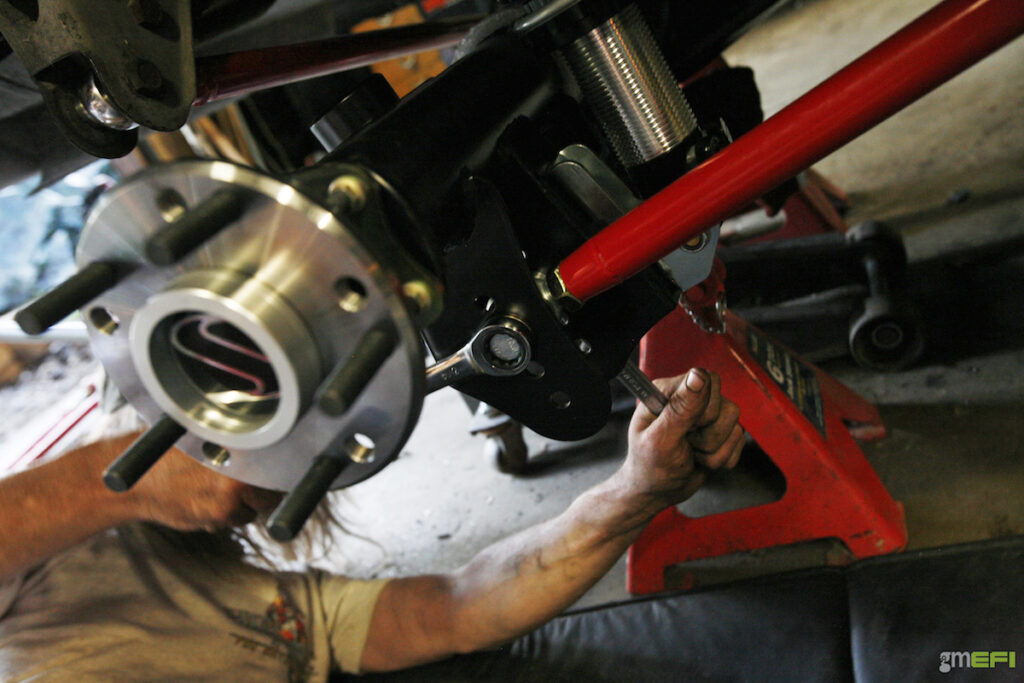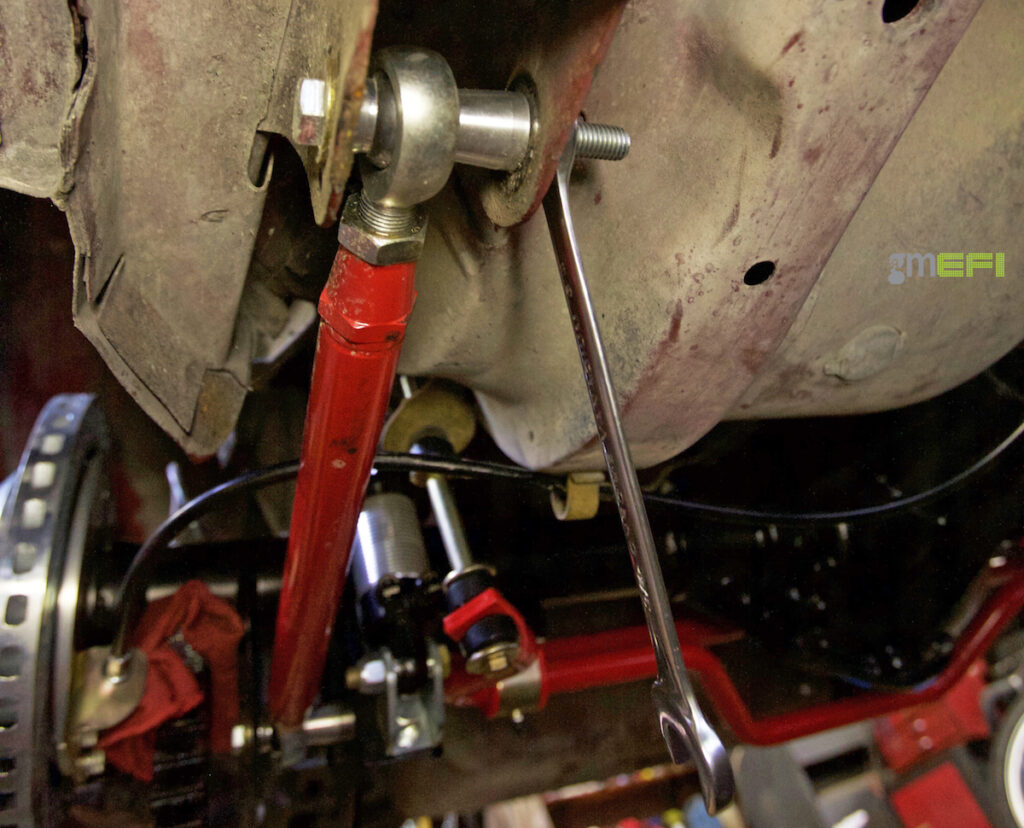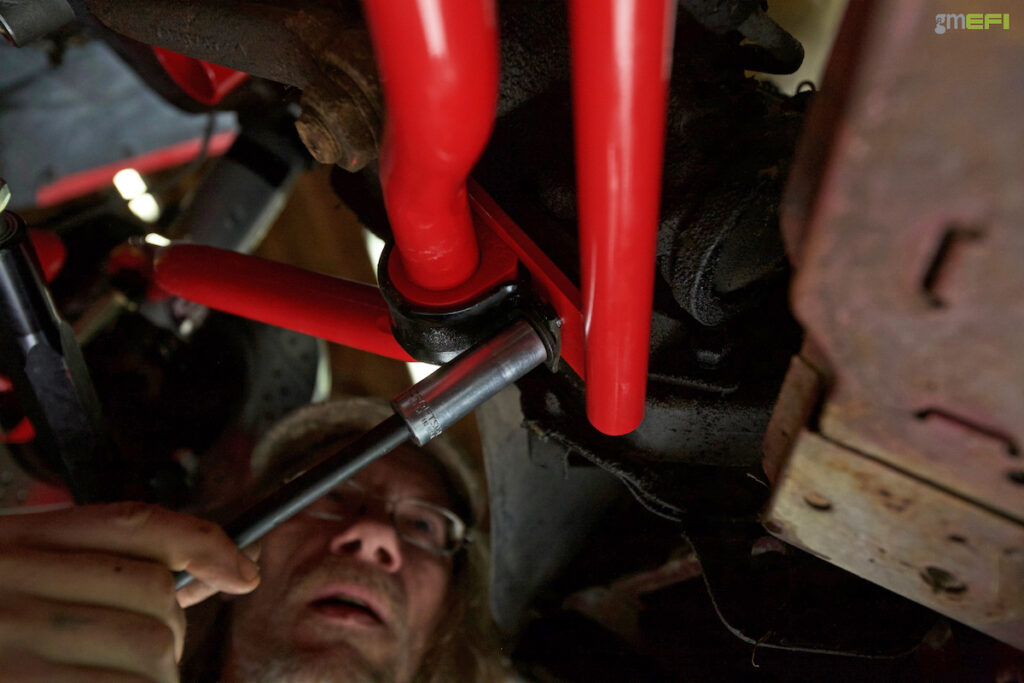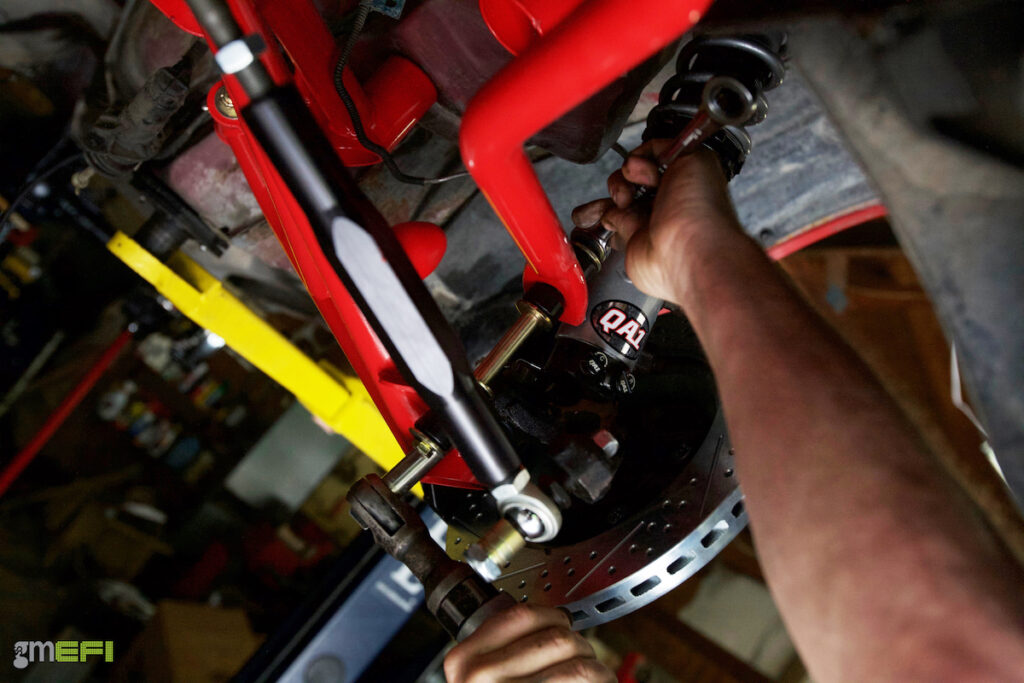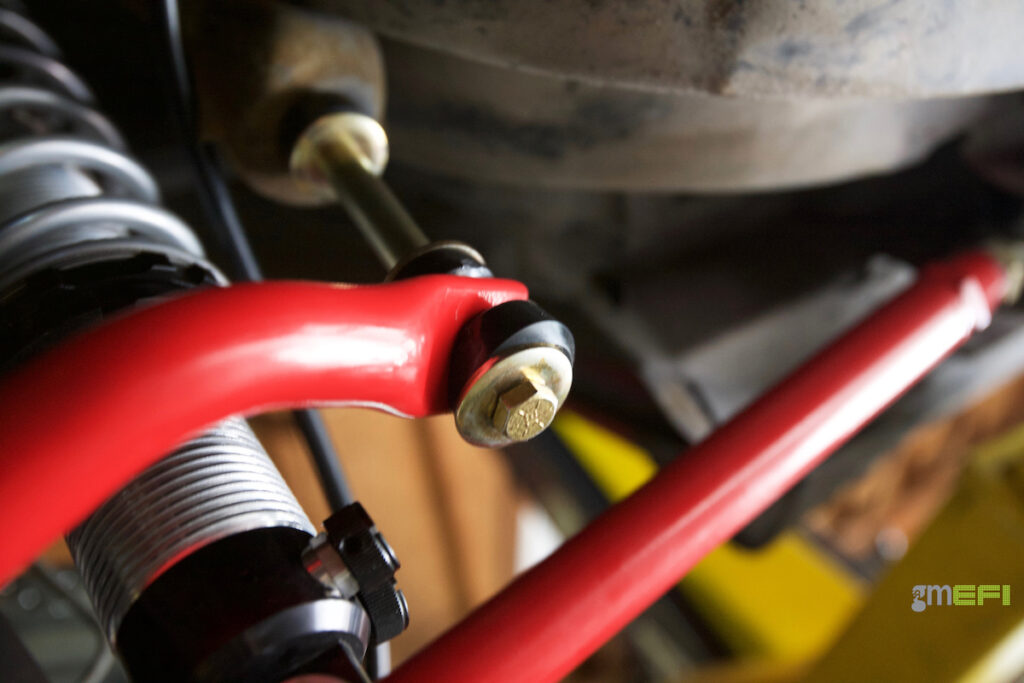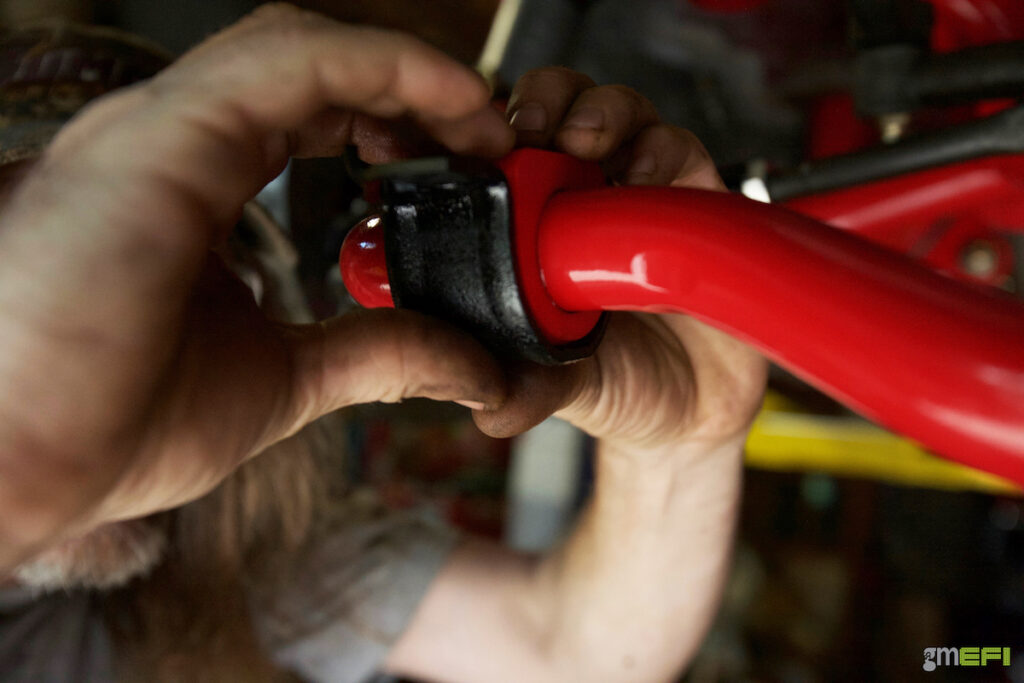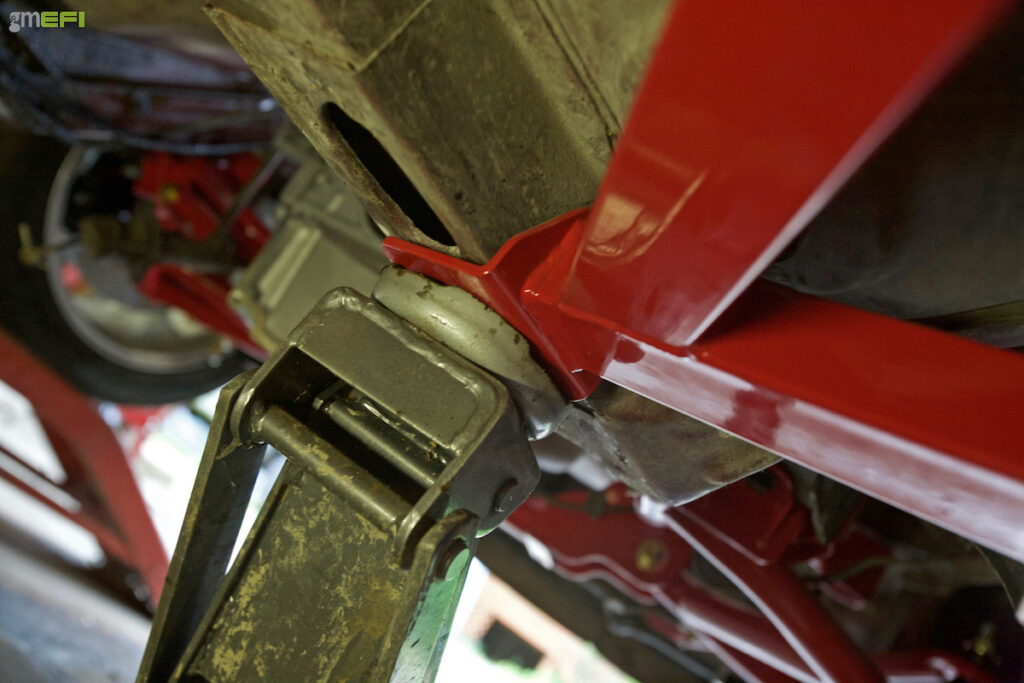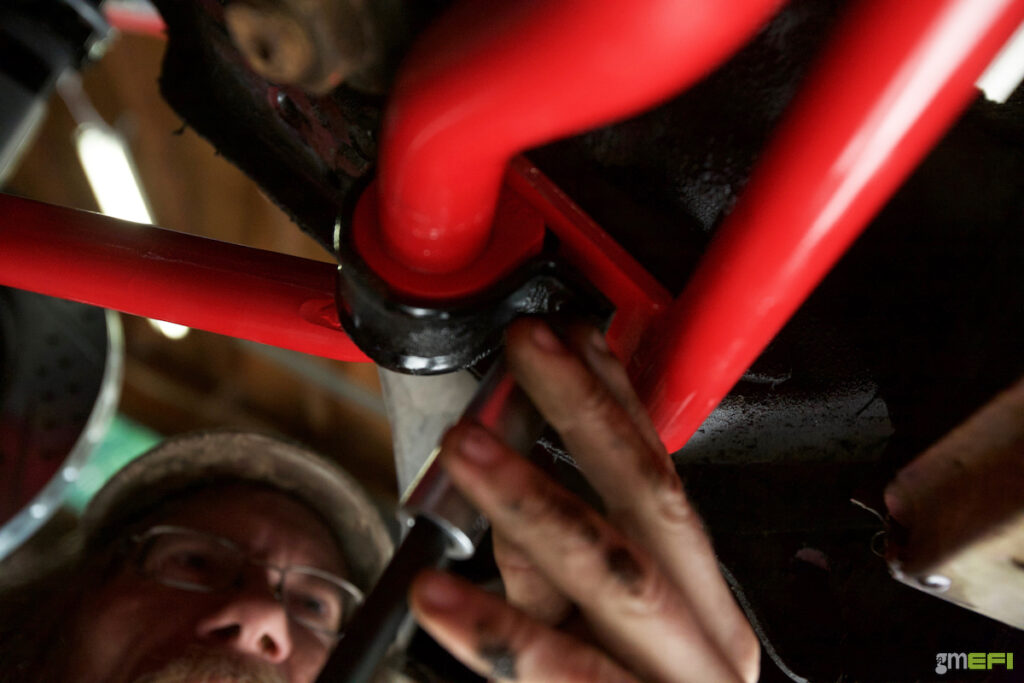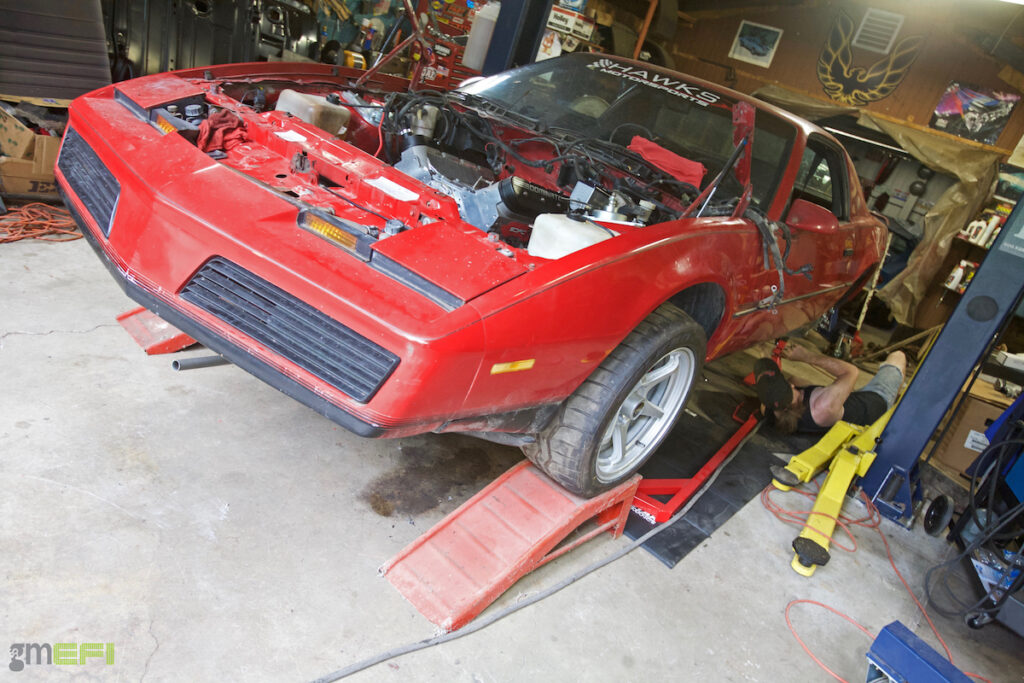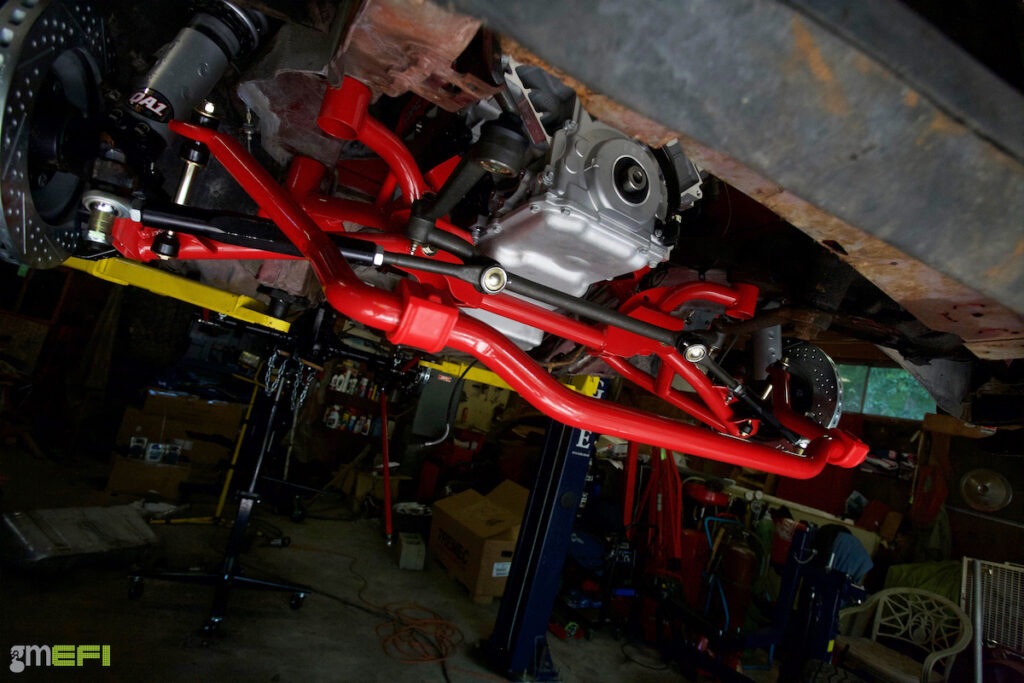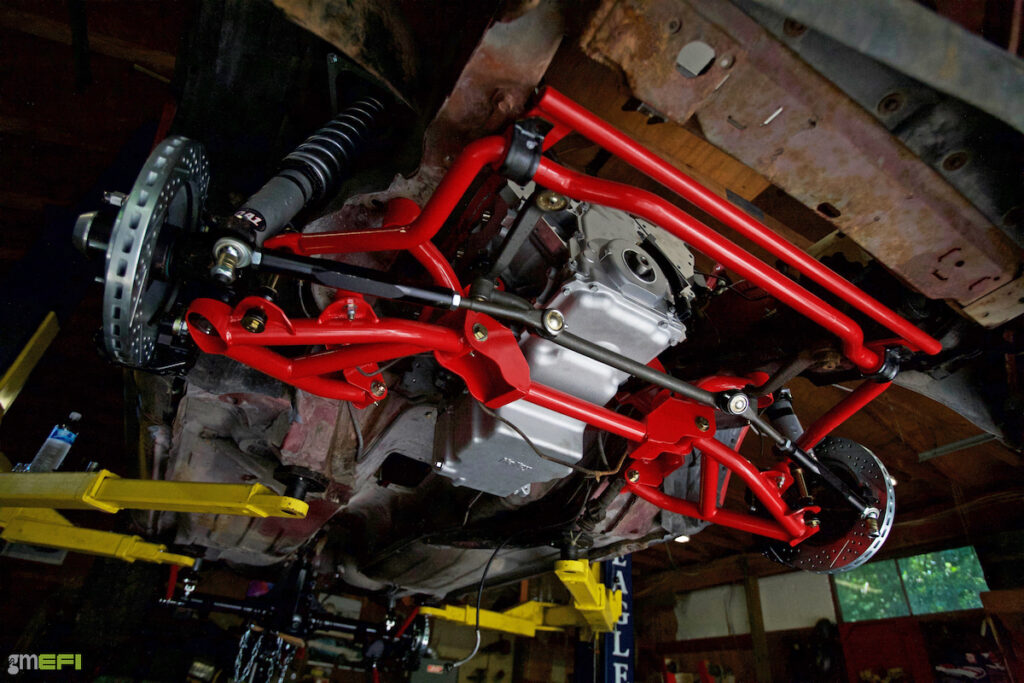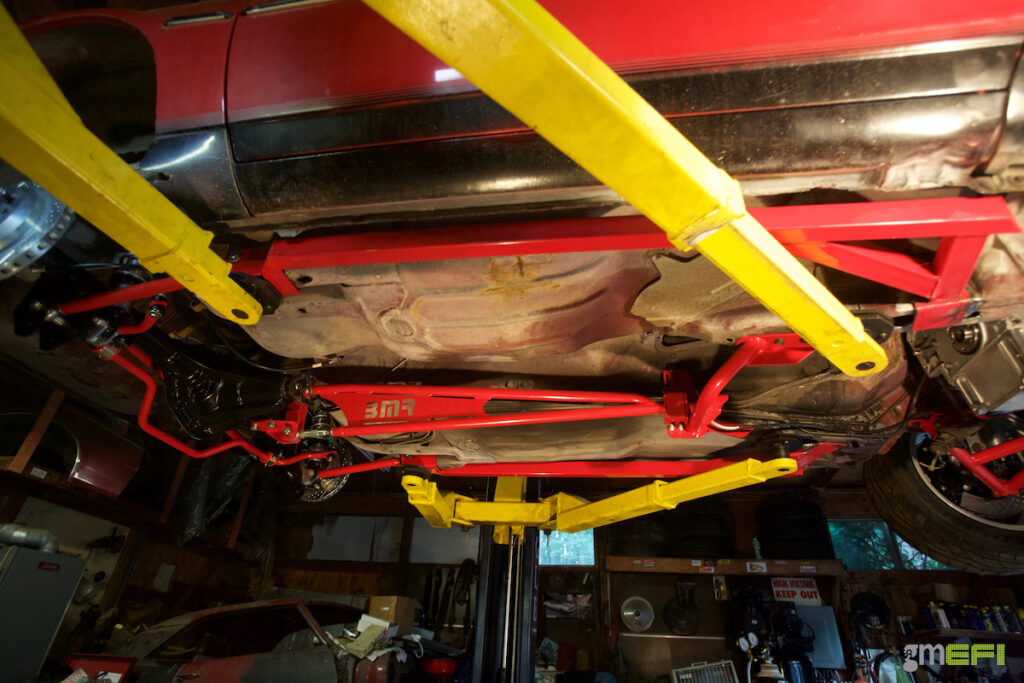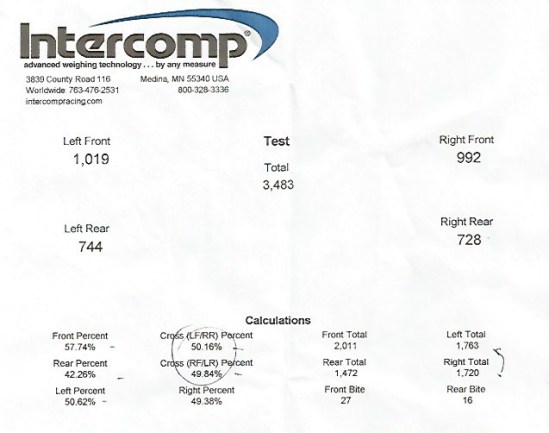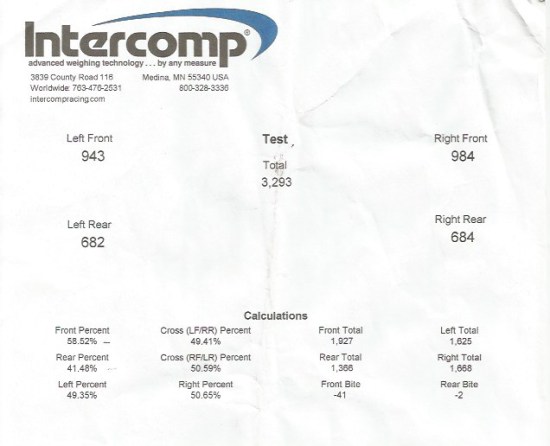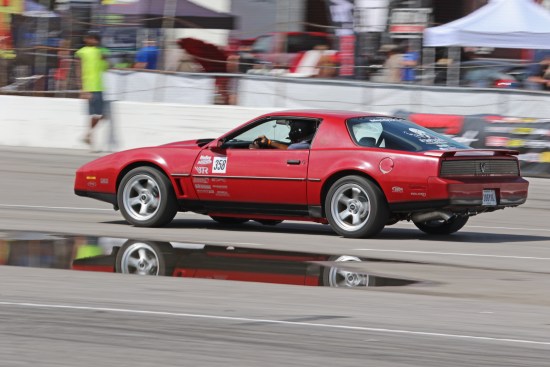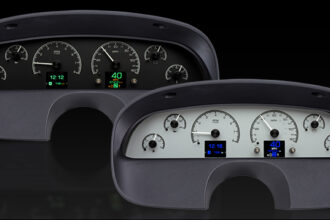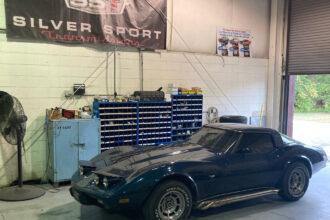photos by: the author
Project Redrum Gets an Overhaul in the Chassis Department!
OK, we’re sleeping on getting these updates over to you. We get it, and we apologize. The last few months have been crazy for the GMEFI crew and there’s no sign of slowing down anytime soon! In recent months, Project Redrum is now up and running, with a few chinks in the armor that we need to address, but all in all, it’s amazing!
Looking forward to getting our readers caught up on the details since our previous installment, we pick things up at our suspension upgrade from BMR Suspension and QA1. We’re also replacing the severely leaking power steering box, with an upgraded, quicker-ratio unit from Classic Industries. While we’re at it we’ll bring our brakes and tie rods into the 21st century, with the help of Baer Brakes. Now while you’ll see the brakes nstalled at the end of this article, you’ll have to wait to the next installment to get the breakdown on the binders.
Picking Our Suspension
There’s no getting around the fact that our ’84 Trans Am was a decent handler from the factory, for its time, all things considered. That said, there have been tremendous improvements over the last few decades in suspension technology and with our significant power increase (from 190 hp to nearly 800 hp at flywheel), the OEM hardware will be simply overwhelmed.
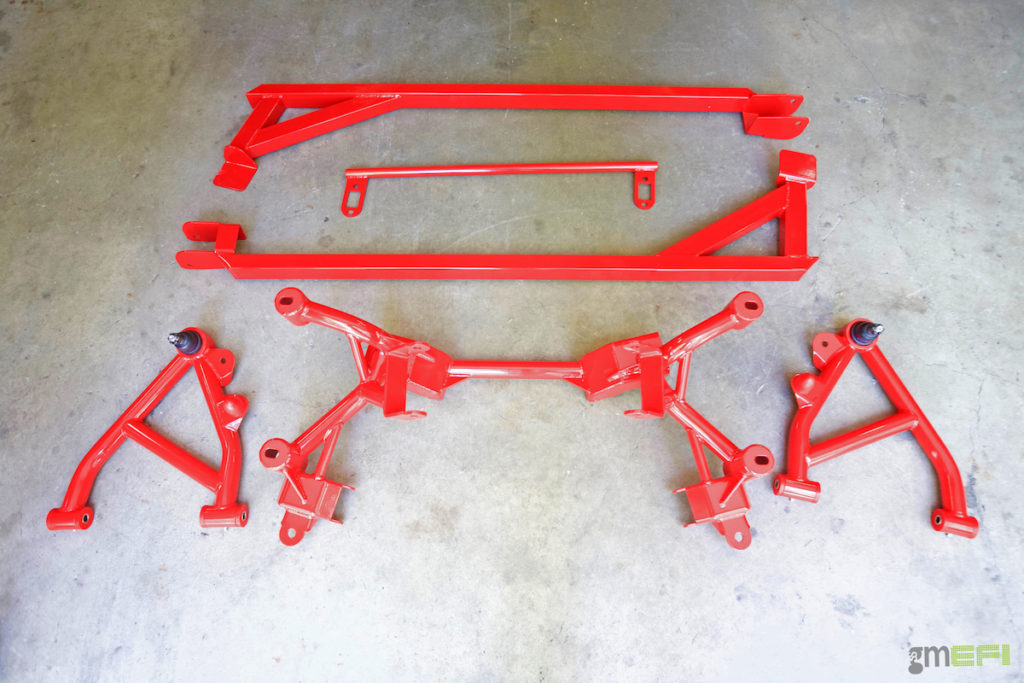
The BMR K-member and front lower control arms (PN-AA008) pictured with the subframe connectors and chassis brace that you’ll read about below). The K-member (bottom row, center PN-KM008) is a tubular piece that increases strength and rigidity, drops weight and allows more room for your hands when you wrench on the car. Since ours is intended for LS-swapped third-gen cars, they arrived to our shop with LS motor mounts already in place. When combined with the tubular lower A-arms, a weight reduction can be seen over that of the stock K-member and lower A-arms.
Looking for a more “bolt-in style” upgrade that uses the stock geometry and pickup points, we turned to BMR Suspension for this particular upgrade. You may have seen a peek of the K-member and bits of the suspension in earlier chapters, but we’ll be diving in much deeper in this particular installment.
Everything that BMR offers for the ’82-02 F-cars were used in this build, from the K-member, sway bars, weld-in subframe connectors, torque arm, Panhard bar and lower control arms. We also enlisted the BMR transmission brace for our American Powertrain 6-speed — a necessary upgrade for our torque arm.
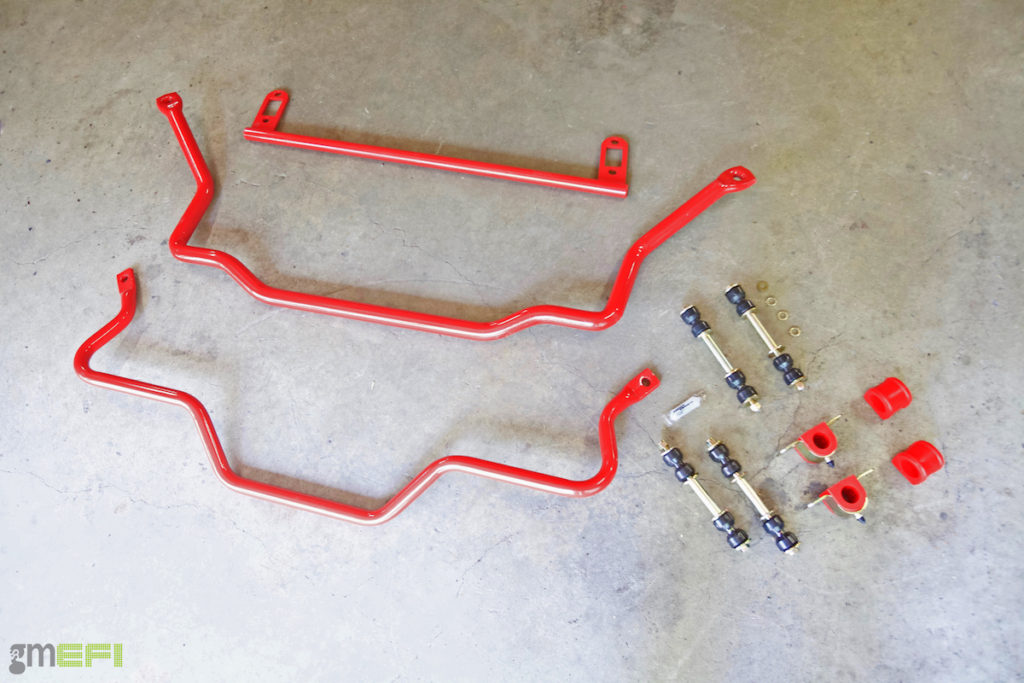
Project Redrum gets new sway bars, as well as BMR’s front chassis brace (PN-CB002) for added rigidity. Along with the subframe connectors are polyurethane end links and sway bar bushings, utilizing technology from Energy Suspension. The sway bar kit is (PN-SB027), and it comes with everything you see here, minus the chassis brace. They spec in at 32mm solid (front), and 25mm hollow in the rear. In a car aimed at cornering, the BMR sway bars help control body roll, and keep the car stable through the corners. The aforementioned chassis brace is a simple bolt-in, that utilizes the same morning locations as the front sway bar bushings, and helps provide a tighter steering fell, as well as increases sway bar effectiveness and chassis stiffness.
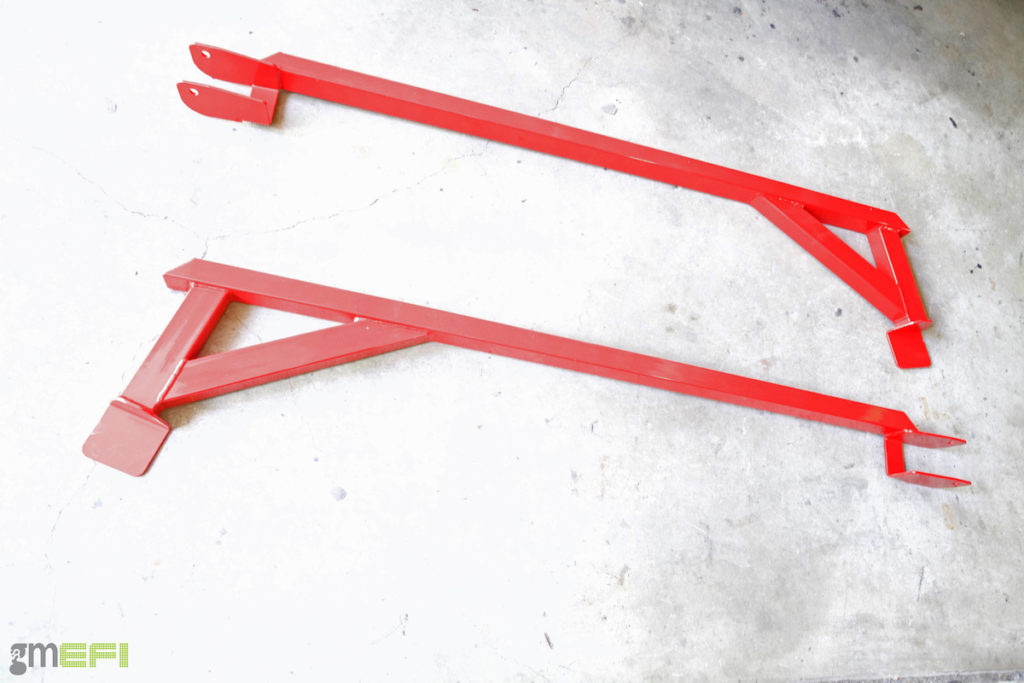
Even with our Trans Am being a solid roof example, the unibody construction of these cars was pretty flimsy, to say the least. Even with the stock horsepower and torque levels, the cars needed some serious reinforcing. BMR soles this with their weld-in subframe connectors. In this case we went with (PN-SFC008), the allows the subframe connectors to run on the inside of the frame box. They improve handling, increase rigidity, help eliminate squeaks and rattles (common in third-gens) and mount to where they essentially connect the front and rear subframes.
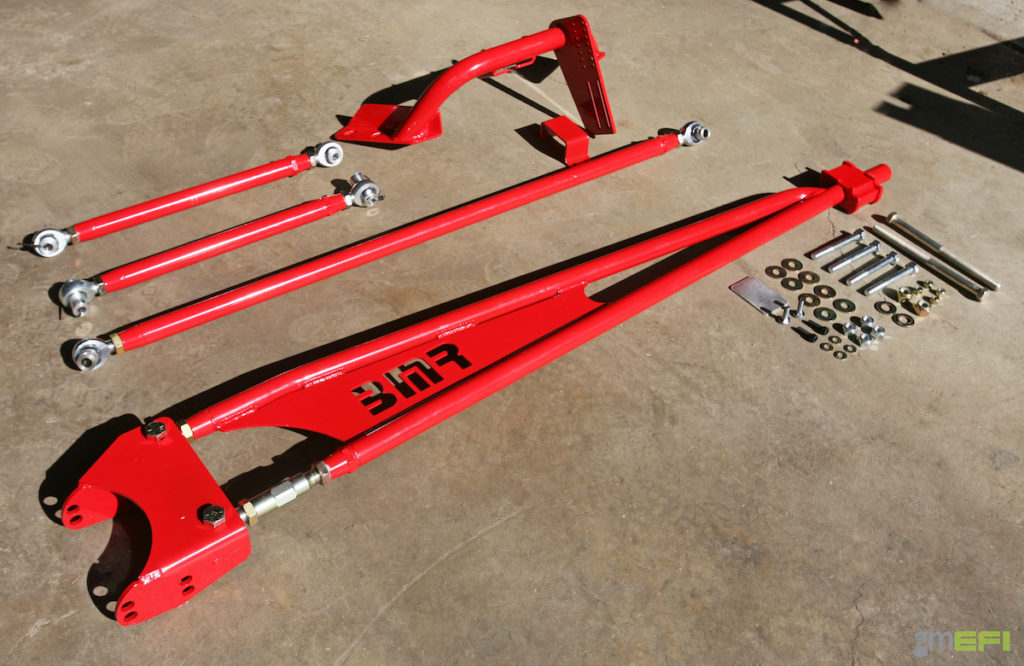
Pictured here, is the BMR Adjustable Torque Arm (MTA001), Rear Double-Adjustable Lower Control Arms (MTCA003), Transmission Crossmember and Panhard Bar (MPHR003). The hardware is includes, and these serve as a direct, bolt-in replacement for the factory suspension. Since the components all use the factory pickup points, no modifications had to be made to them, or to the car itself. However, we later found out that the Torque Arm wouldn’t really allow for enough exhaust clearance, as it was designed around a factory style exhaust system and the OE drivetrain. We’ll get into that in a second, but we should point out that all of the components are able to be adjusted on the car, and are available in Black Hammertone or Red, like you see here.
Looking closer at the BMR hardware, and it quickly becomes obvious that everything that arrived at our door is high-quality and built for the task at hand; from the grade of steel and aluminum used, to the welds on the Panhard bar, K-member and A-arms.
All of the bushings, including the end links, are made from polyurethane for increased strength and durability. They also help the overall handling, too. The Panhard bar and Lower Control Arms are adjustable and sold individually, or as a kit with a single part number (PN-RSK-036). Designed to increase launch traction, handling, and reduce wheel hop, they’re almost mandatory for a car that sees any action at all. Even in stock form, they’ve made a huge difference on a few vehicles that we’ve installed BMR products on.

After we originally installed the bar above, we later realized some clearance issues to do our TREMEC Magnum 6-speed, American Powertrain crossmember and Hawks exhaust. The solution was this BMR TRAK PAK Torque Arm (TPU001), that allows for additional ground clearance, as well as helping our fitment issues with the aforementioned.
QA1 Coil-Overs
Eight-hundred crank horsepower. From a pump gas, no-methanal, supercharged powerplant. That’s not too shabby. But you have to be crazy to have that kind of power under the hood, to roll with no-name, off-the-shelf coil-overs or stock replacement shocks. We needed something that would offer the ability to adjust for ride height, firmness and recoil — whether we’re on the street, the track, or when we feel so inclined… the dragstrip.
QA1 answered the call at the time of our installation, and we ordered up the fully-adjustable units of all four corners.
Initially known for their dedication to drag racing, QA1 was been making a hard left turn towards the autocross and road-racing set in recent years. Hey, if the market changes then so do you.
When we ordered our suspension hardware for Project Redrum, we worked with our friend, QA1’s David Kass, on vehicle set-up, curb weight, and what the intentions were for the Trans Am. Using a very specific list provided by our staff on what was going into Redrum, Kass was able to assemble a set of shocks and struts that would compliment our combo.
We ended up ordering a competition coil-over system, front and rear, that also included QA1’s adjustable Camber Caster Plates, Spanner Wrench and Thrust Bearing Kit. Their respective part numbers are listed below:
- Front Coil-over kit – HD606S-12250
- Camber Caster Plates – CPK106
- Rear Coil-over kit – RCK52331
- Spanner Wrench – T114W
- Thrust bearing kit – (2) 7888-109
Power Steering Box
One look at our power steering box, and it becomes immediately clear that ours was toast. Assuming that it’s the original one from the Van Nuys factory, it was caked in old fluid and grime, it groaned when you turned the wheel and it leaked fluid live a civ. There was blowback from the unit as it has been used over the years
From what we understand, the car sat in a storage facility of something like 15-20 years, more than enough time for the seals and hoses to dry rot. There are many options out there, but despite our incredible hardware under the hood, we elected to go subtle but effective, with the Classic Industries Quick-Ratio Power Steering Box.
Designed for most GM passenger vehicles, Classic Industries’ P18511 Quick Ratio Power Steer Box offers an easy and affordable solution to the leaking unit in Project Redrum. Classic Industries offers these as a direct bolt-in replacement, so they look identical to the OEM piece, but with stronger and quicker-ratio internals.
Considering that it’s a direct replacement for the stock unit, it bolts right in with little effort, and it won’t stick out like a sore thumb if you want to maintain an OEM appearance. According to our friends at Classic Industries, each gear box is completely tested for reliability and quality before leaving the factory, have a 1-year limited warranty and are cosmetically correct so you can maintain an original appearance (if you’re into that kind of thing).
Replacing the steering box is pretty straightforward, and can be handled in about an hour or two with simple hand tools. We have a lift, which makes things a little it easier, but it can be done laying on the floor, if need be. There are mounting bolts both above and below the unit that needed to be removed, and separating the steering box form the steering column once all mounting hardware was removed took nothing more than a little prying with a pry bar.
- Looking to reuse our Pitman arm, considering it was still in perfect shape, we needed a removal tool to get it off the pump. It took some effort but she broke free.
- Mission accomplished. The Pitman arm will be attached to the new steering arm.
Steering Box Features:
- 100% computerized hydraulic testing measures for proper flow, leakage and performance to ensure perfect fit and function.
- New o-rings and lip seals ensure no leakin g and long-lasting performance.
- Critical components (campacs, spool valves, etc.) are triple-tested to ensure product reliability.
- Rust inhibitive “Cool Dip” finish is a penetrating dye that completely covers all exposed surfaces for a consistent, protective finish that will not crack, flake or peel.
- Shafts are surfaced to precise specifications to eliminate premature seal wear and extend gear life.
- Spplied with 100% tested and calibrated pressure relief valves forg uaranteed performance.
- No core exchange required
Specifications:
- Metric o-ring type pressure and return ports
- 3/4″ input shaft
- 4 bolt cover
- 2.5 turns lock to lock
*The steering system must be flushed and replaced with OE recommended fluid. Hoses should be inspected and replaced if they have been in use for more than five years.
Installation
When it came to most of the components, the installation was pretty straightforward. The only thing that really needs to be pointed out here, is the weld-in subframe connectors. You need to tack weld them into place while the car is resting on solid ground, or in our case, on a set of ramps.
Even when you put the car on a lift, there’s still a chance of body flexing, so you want the weight of the car on the ground, but in a position to where you can weld a few tacks to hold them into place. Once you do so, you can run your weld beads.
Also if you have access to a lift, it’s much easier to swap out the K-member with the car up in the air than it is laying on your back. We pulled the engine prior to receiving the BMR components, so in our case, it was just a matter of dropping the factory K-member and bolting in the BMR unit.
We covered the rear suspension installation in an earlier segment, when we used the opportunity to install the Strange S60 rear axle.
Adding to the adjustability to the Trans Am’s suspension and steering, are a set of Tracker Tie-Rod ends from Baer Brakes. Made from 6061-T6 aluminum the Tracker tie rods are vehicle specific, and were designed specifically for 1982-92 Camaro and Firebird (PN-3301008). These mount to the OE inner tie rod, and offer approximately .875-inch of adjustment at the spindle to help correct bump steer issues due to modified suspensions. Baer offers them for other GM vehicles as well, and you can see the full roster HERE.
Installation Wrap Up
With the suspension in the car, the wheels back on, and Redrum on the ground, we entered the F-Body in the autocross at Holley’s LS Fest East. While at the event, we had the chance to put the car into formal testing on their autocross track, as well as the street.
Body roll is nonexistent, the ride is comfortable and stable, and the steering in competent and accurate, with no play. The QA1 coil-overs allowed us to bring the car’s center of gravity down from stock, and the overall ride height has been lowered 1.5-inches. While at the event, we also put the Trans Am on the Intercomp scales in the QA1 booth, and it broke down the vehicle’s curb weight and weight balance.
Conclusion
After everything was bolted in and adjusted to where it needed to be, we just took it all in. The difference from where the car began to where it is at this point, is astounding — it’s almost likes it’s not even the same car.
The exterior is a little “Mad Max,” but the parts list of all of the hardware that’s under this thing is impressive. We still have to address the supercharger, exhaust, fuel system, serpentine system, brakes and cooling system in upcoming articles in the near future. Stick around, you wouldn’t want to miss it.

Rick Seitz is the owner and founder of AutoCentric Media, and has a true love and passion for all vehicles; GM, Ford, Dodge, imports, trucks — you name it! When he isn’t clacking away on his keyboard, he’s building, tuning, driving or testing his current crop of personal projects!




